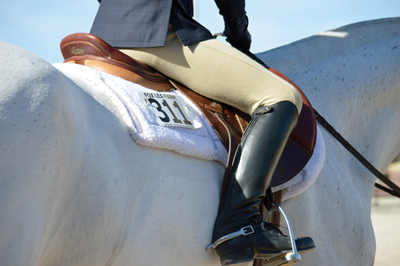 Equitation riders don’t have the benefit of flashy, color-coordinated outfits to help leave a lasting impression on the judges. “You just have to be a great rider,” says Darla Lee, owner/trainer at Lee Quarter Horses in Plain City, Ohio.
Equitation riders don’t have the benefit of flashy, color-coordinated outfits to help leave a lasting impression on the judges. “You just have to be a great rider,” says Darla Lee, owner/trainer at Lee Quarter Horses in Plain City, Ohio.
Compared with their peers who compete in Horsemanship, Equitation riders must also be physically stronger riders to demonstrate proper equitation with less saddle to “hold onto.”
“Most non-pros in our business do not start off riding in English saddles, and there is no hiding your ability when riding in an English saddle,” she adds.
The Equation pattern is a test of a rider’s ability to ride in perfect form, maneuver a mistake-free pattern, all while working in unison with their horse. Riders who excel at the highest levels in the Equitation pattern thrive on a challenge.
“I tell riders who want to compete in this class that they have to be willing to work hard and put forth 110 percent effort,” says Robin Frid owner/trainer of Robin Frid Show Horses based in Denton, Texas.
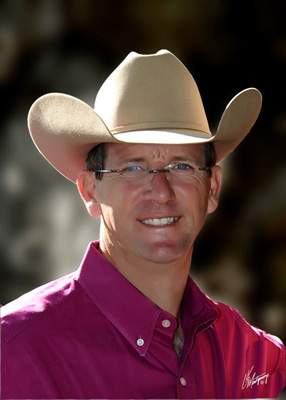
Robin Frid
Evolution
The objective of the Equitation pattern has changed little over the past several decades.
“It’s about a rider’s seat, feet, hands, foot in the stirrup, strong legs and their ability to handle their horse,” explains Darrell Bilke, COO/executive vice president at the Pinto Horse Association (PtHA). “The judging, traditionally has been and remains, on the rider,” he explains.
Melissa Dukes, a carded APHA, AQHA and NSBA judge agrees.
“It’s (the pattern) is designed to judge the rider and how the rider executes the pattern in harmony with their horse to the best of their ability,” she insists.
Though the premise of the class has remained the same, the patterns and the judging system have changed.
“The pattern has become more intricate and complex,” she says. In part, the new score cards used at many breed shows has increased the intricacy. Score cards require judges to assign a score for each element within the pattern.
“Instead of watching the entire ride and giving a score at the end, we’re giving a score for each maneuver. It helps us as judges break things down,” she adds.
The pace and the space in the arena a rider has available to complete the pattern has also changed.
“I feel like patterns have opened up quite a bit which requires riders to use more of the arena and have a more forward pace,” says APHA, AQHA and NSBA carded judge, Tanya Green, of Aubrey, Texas. In years past, riders were given compact patterns.
“Great riders can make tight patterns look good, but a bigger pattern will always be prettier,” she says.
Bigger patterns encourage a ground-covering pace. It has become more of a working hunter style where there’s always a destination, according to Frid.
Exhibitors say they appreciate the additional space.

Debbie Wall
“In the past, patterns had a lot of short distances of gaits, not allowing for that forward movement. The patterns, which are now often big and open, are a more ideal set-up for forward movement needed to jump a course,” agrees Ariel Herrin the 2014 AQHA Amateur Equitation World Champion.
As the patterns have become more forward, fewer halts and backs are included in the patterns. “There is not a lot of stopping in patterns anymore. The transitions are more forward too,” Green says.
Fewer halts and backs maintain a steady cadence for large shows to funnel sometimes hundreds of exhibitors through a pattern in a timely fashion. However, Frid says he thinks the elimination of these maneuvers is a mistake.
“At larger events I’m not seeing any back-ups. Personally, I don’t think that’s right. The horse should be able to demonstrate its ability to respond to backward pressure,” he explains.
The degree of difficulty has evolved as riders’ skills have advanced.
“The focus in the patterns has trended toward precision and perfection of transitions,” says Tallahassee, Alabama based amateur rider, Debbie Wall, the 2012 PHBA Reserve World Champion in Select Amateur Hunt Seat Equitation.
“The patterns get a little tougher each year,” Bilke says.”
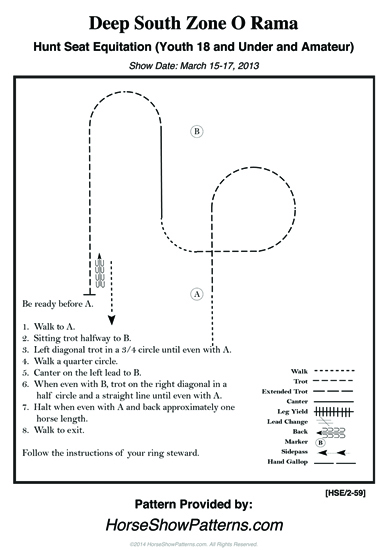
Deep South Eq Pattern
Design is in the details
Pattern designers and judges are granted the ability to sketch a pattern as they see fit as long as it meets the specific association or clubs rules and is appropriate for the level of rider in the class.
For Meriruth Cohenour of Yukon, Oklahoma, who designs all PtHA World Championship patterns, testing the pattern she’s created is essential.
“I have my students ride the patterns in different variations with the cones set in different places,” she says, “I also ride all my patterns on different types of horses.”
Guided by the Association’s rules, she includes the required gaits: the walk, trot and canter as well as an extension of those gaits. A figure-eight with a change of diagonal or lead changes are optional maneuvers that she incoporates based on the level of show for which she is designing. Forehand turns and turns on the hind-end are also optional elements that can be included in an Equitation pattern.
“I like using the forehand turn for hunters because it’s a bit easier with two hands and it’s more difficult than people give it credit for,” she adds.
Her favorite challenge to riders is the leg yield.
“There is nothing prettier than a leg yield done right,” she insists.
Cohenour has designed PtHA World Show patterns since 2006. Early on she sought the advice of seasoned professionals for feedback on her patterns.
“I consulted with ring stewards, especially Don Manuello and Ron McMillan, knowing they had seen the best of the best,” she says.
She also studies the patterns used at each breed association’s annual world championship show, even if it means watching the gos online. New ideas for pattern organization and a demonstration of how certain elements ride within a pattern provide a source of inspiration for future patterns she develops.
“I also like to watch my own patterns in real time. Sometimes things look really good on paper, but don’t work as well in the ring. I like to watch and make sure I didn’t create a trap,” she adds.
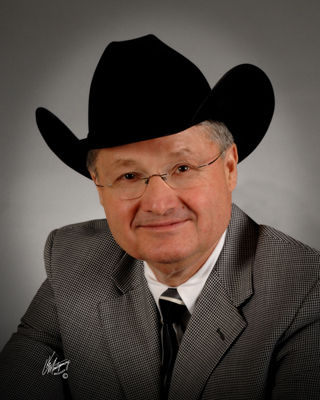
Darrell Bilke
Whether the pattern is designed by a consultant, like Cohenour, or a judge, the show committee reviews the pattern for appropriateness.
“When I look at patterns I make sure all the things that could happen in the ‘real world’ are in the pattern,” Bilke says.
In his opinion the pattern should incorporate everything a horse and rider would be asked to perform in a flat class or over fences in the English discipline.
“There should be something in each pattern that shows a walk, a posting trot, a sitting trot, diagonals, a stop, a back-up and a turn on the haunches or forehand,” he adds.
The level of competition at each show determines the degree of difficulty within each pattern. “When I look at patterns for our World Show, I look for a pattern that is not too terribly difficult, but that allows a horse and rider to display their abilities and accomplish the required maneuvers,” says Terri Green, Palomino Horse Breeders Association (PHBA), General Manager, Marketing, Website and World Show.
That doesn’t mean she’s looking for an easy pattern either, but one that is appropriately challenging for the level of rider.
“I look for patterns that transition nicely from one gait to another and include changes in diagonals,” she adds.
Whether the judge is able to submit a pattern is determined by the show committee. In cases where judges are given a pattern, they are able to provide input and make modifications when necessary. “I look for plenty of room in the pattern,” Tanya Green says, “if I’m not in love with the pattern I am given, especially if it’s a tight pattern, I at least split the cones up and give riders plenty of room.”
Show management and judges look for patterns that move riders efficiently through the patterns. This is especially critical for events with large classes. Bilke requires that Cohenour design patterns that a rider can complete in one to one-and-a-half minutes.
Start and finish locations play a significant role in efficiently moving riders through the pattern.
“The entrance and exit of the pattern are critical. Rider number one and rider number two shouldn’t get in one another’s way,” says Tanya Green.
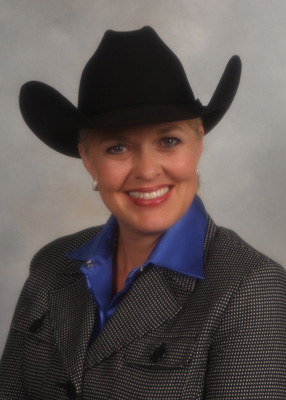
Melissa Dukes
Practice makes perfect
Learning to excel in equitation is a two-part process. The first, is mastering the proper body position. The second, being able to execute the pattern.
“I encourage my riders to work on fundamentals, transitions and steering are the most important,” says Lee. Rather than asking a rider to practice a pattern 20 times she focuses on having riders perfect the basics.
“I have always felt if you have all the basics sharp you should only have to run through a pattern two to three times,” she says, “my best Equitation riders can go out and do a weekend pattern great the first time without ever setting the cones up one time.”
At the same time, a rider with flawless equitation needs to be able to execute the pattern.
“I do lots and lots of transitions and riding every shape I can think of. I try to be prepared for anything,” Herrin says, “at shows I primarily concentrate on the aspects of the pattern, but in smaller segments so my horse doesn’t anticipate the maneuvers.”
Finding a rhythm is an important element in the equitation pattern. “I practice the (individual) elements of the patterns at home and at the show. Then, close to show time I string the entire pattern together and ride it a couple of times to get the rhythm,” Wall says.
There is no substitute for practice.
“It is obvious and refreshing to see a horse and rider that are well-versed in any and all maneuvers. Nothing will equal success in the show pen like time in the saddle,” Herrin notes.

Terri Green
Building strength
Regardless of the rider’s level of showing, the pattern must be mistake free. When multiple riders turn in an accurate performance, it’s the rider’s strength and body position that determine the winner. “Riders need to have a strong base and not just be perched on their horse,” Dukes says.
Good equitation showcases a rider’s leg strength and position, which includes dropped heels. “My eyes are automatically drawn to the rider’s legs,” Tanya Green says.
Developing strength is only achieved through time in the saddle. “Riding in the two-point is a great way to build strength,” she adds, “so is riding without irons.”
People that want to be successful in this class need to be in the saddle as much as possible, according to Frid.
“You can’t just ride in jeans and western boots and think you’re going to improve, you need to ride in breeches and tall boots and concentrate on wrapping your legs around the horse,” he says.
The secret to success in equitation—do your homework and ride as often as you can. “It’s hard to get strong if you only ride once a month,” Tanya Green concludes.



You must be logged in to post a comment Login